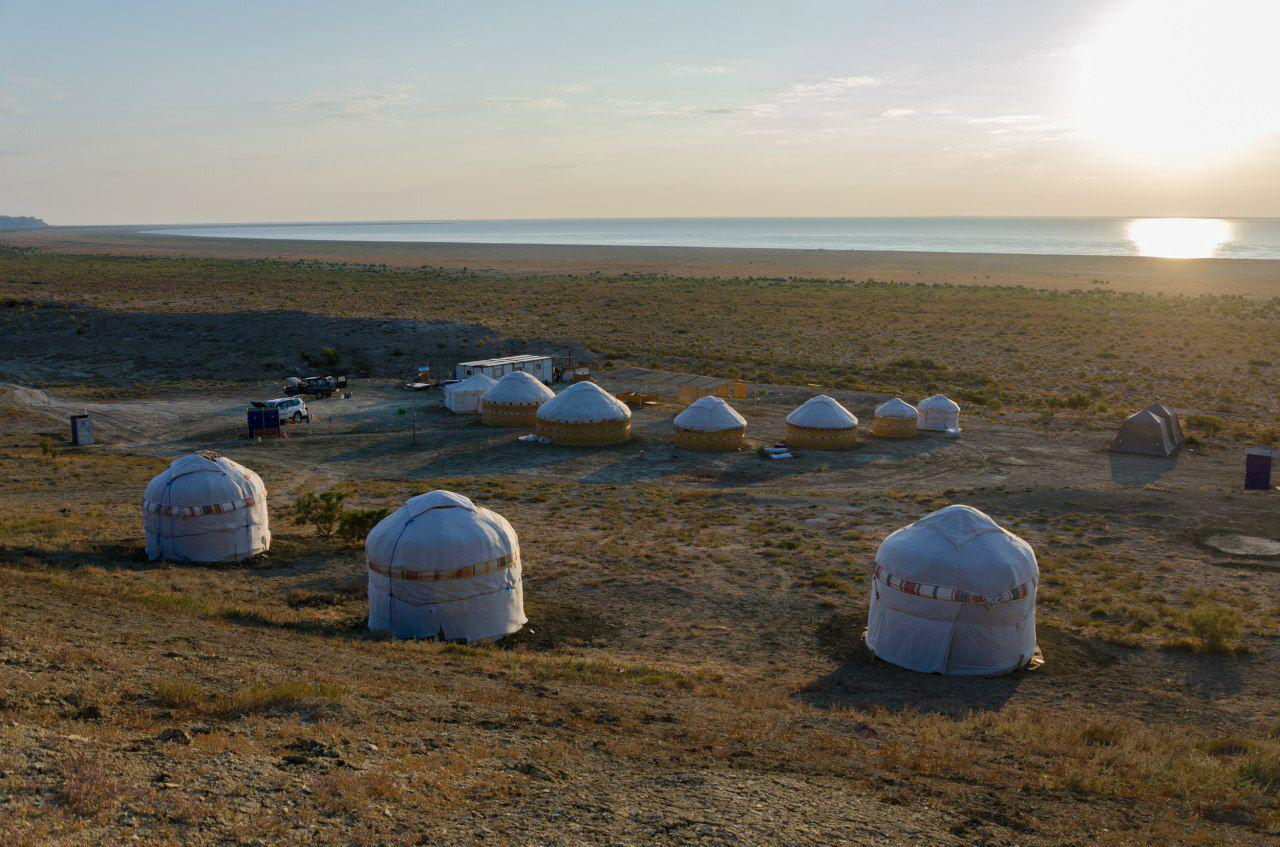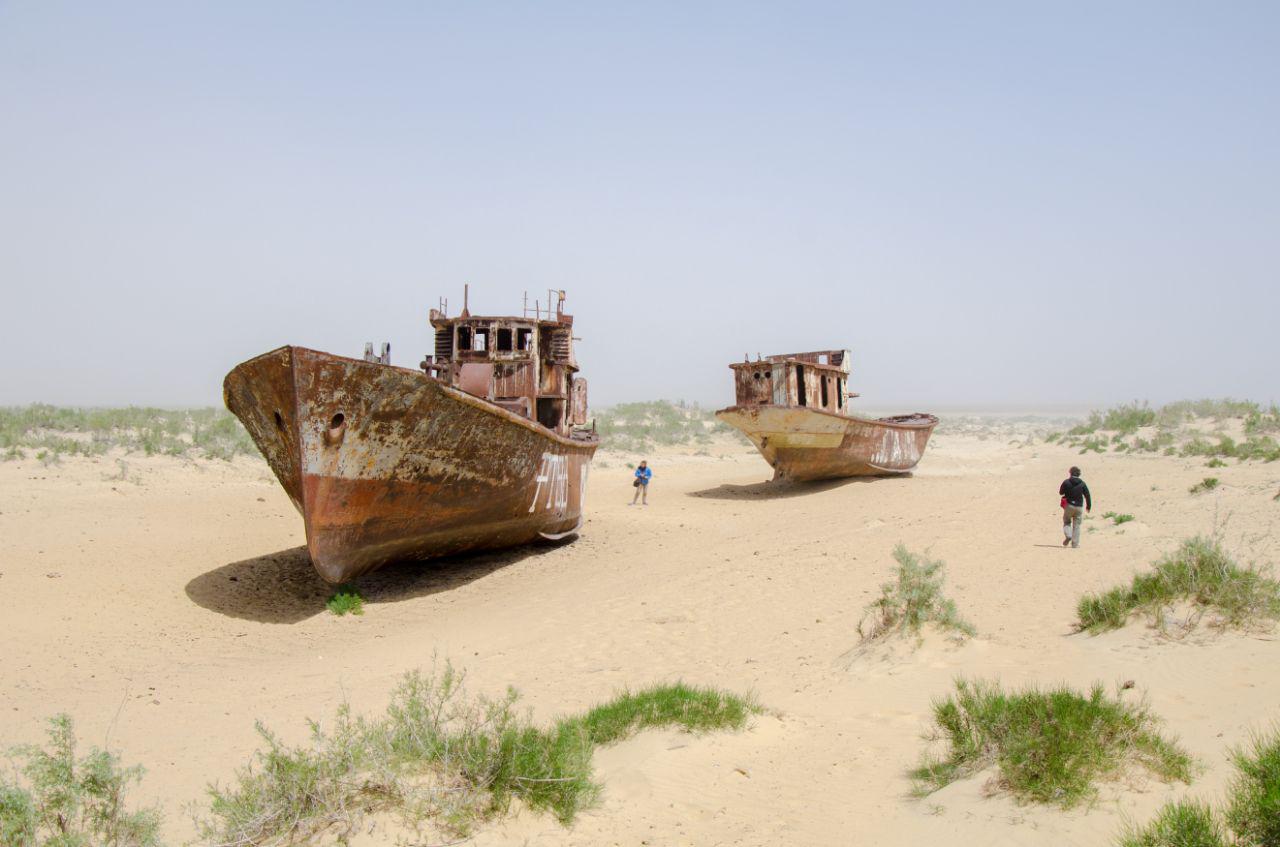aral sea before 1960
Despite its name, the Aral Sea is a freshwater lake and used to be the fourth-largest lake globally. Today it is on the verge of extinction, causing irreparable damage to the environment and the lives of people living near it.

yurt camp at the Aral Sea 
cemetery of ships in Muynak town
Flora and fauna were very diverse and included 38 different fish species. The lake played an important role in developing the region’s economy and provided jobs for the population. Before the Aral Sea started to shallow, the annual fish catch was 30,000-35,000 tons, and more than 80% of the coastal inhabitants were employed either in the fishing industry or in agriculture.
The lake has also helped regulate the climate and mitigate severe weather fluctuations throughout the region, positively impacting the population’s living conditions, agriculture, and environmental situation. The air masses that invaded the territory were warmed up over the water in winter and cooled down in summer.
The Aral Sea was fed by the two main rivers flowing through Central Asia: the Amu Darya and the Syr Darya. In Soviet times, the construction of numerous irrigation canals throughout Central Asia began to promote agriculture. The water from the rivers was diverted mainly from the rivers and used to irrigate the fields. As a result, less and less water reached the lake. Except in rainy years, both tributaries already seep away many kilometres before going to the lake basin in the desert, called “Aralkum” by the locals.

aral sea today
One of the direct consequences of dehydration is climate change. Now the dry part of the lake has turned into a salt desert. The salt is spread by winds and thus pollutes the environment. In 2021 the lake covers only 8% of its original surface. The former harbour town of Muynak is now about 80km from the shore, which takes approximately 4 hours’ drive by off-road vehicle.